Advice to Aspirants - CAT: Logical Reasoning and Data Interpretation | CAT Mock Test Series 2025 PDF Download
- Rohan Sharma, IIM A
Importance of Logical Reasoning and Data Interpretation for CAT
- The Logical Reasoning and Data Interpretation (LRDI) section is one of the three core sections of the CAT exam, alongside Quantitative Aptitude (QA) and Verbal Ability and Reading Comprehension (VARC). It tests your ability to analyse complex data sets, identify patterns, and make logical deductions under time constraints.
- Over the years, our team at EduRev has guided thousands of aspirants, including 500+ who secured seats at top B-schools like IIM Ahmedabad, Bangalore, and Calcutta. The common thread? A strategic approach to LRDI backed by consistent practice.
LRDI is unique because it combines analytical thinking with quick decision-making, skills critical for management roles. A strong performance in LRDI can significantly boost your overall CAT score and enhance your chances of securing admission to your dream B-school. This document, compiled with insights from IIM graduates, aims to help you achieve the elite 99+ percentile in the LRDI section.
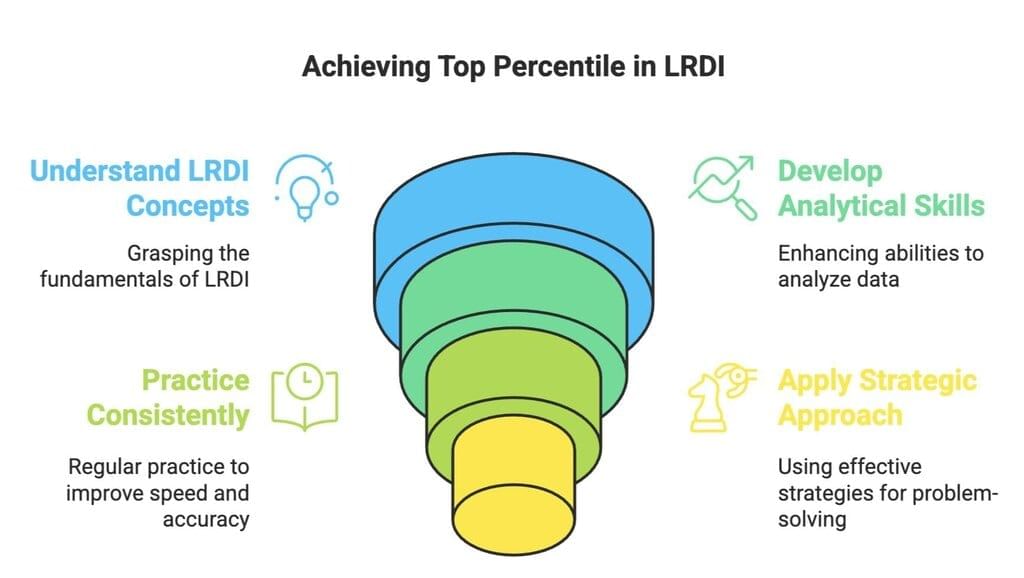
CAT 2025 LRDI Details
| Total Questions in CAT LRDI Section | 20 |
|---|---|
| Total Marks in CAT LRDI Section | 60 |
| Types of Questions in LRDI Section | MCQs and TITA (Non-MCQs) |
| Total MCQs in LRDI for CAT Section | 12 |
| Total TITA (Non-MCQs) in LRDI for CAT Section | 8 |
| Difficulty in LRDI for CAT Section | Moderate to High |
| Marking Scheme in LRDI Section for CAT | +3 (correct), -1 (incorrect) |
The CAT exam does not have a fixed syllabus, which often confuses aspirants. However, LRDI questions typically revolve around recurring themes.
Topic-Wise Distribution of CAT LRDI Section: Last 3 Years
2024
- In CAT 2024, the DILR format changed compared to CAT 2023. The total number of questions increased from 20 to 22.
- In CAT 2023, there were 4 sets of 5 questions each. However, in CAT 2024, there were:
- 2 sets of 5 questions each
- 3 sets of 4 questions each
- The layout of the sets is shown in the table below.
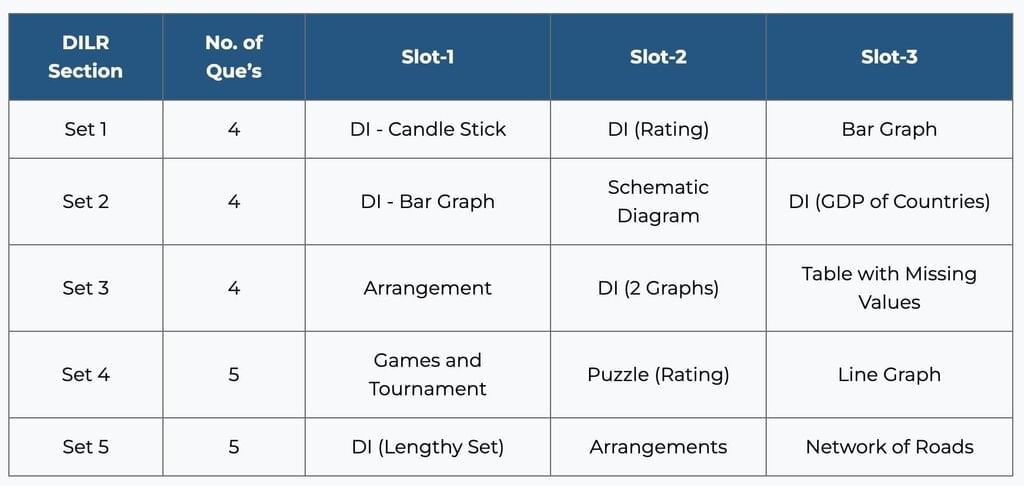
2023
The table below highlights the key DILR topics featured in the CAT 2023 question paper.
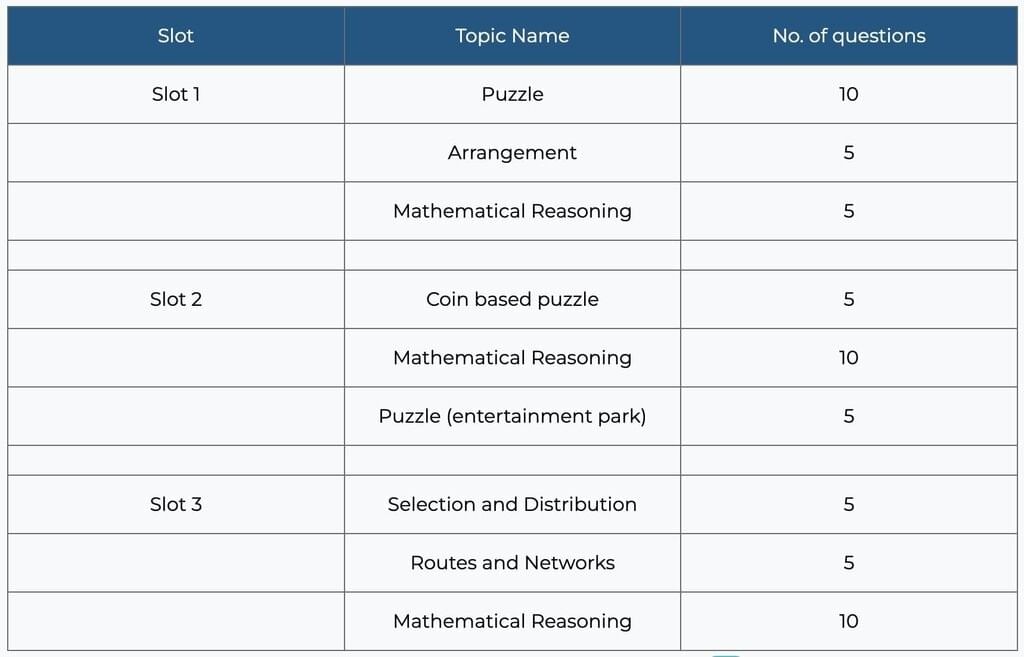
2022
The table below outlines the major DILR topics that were emphasised in the CAT 2022 question paper.
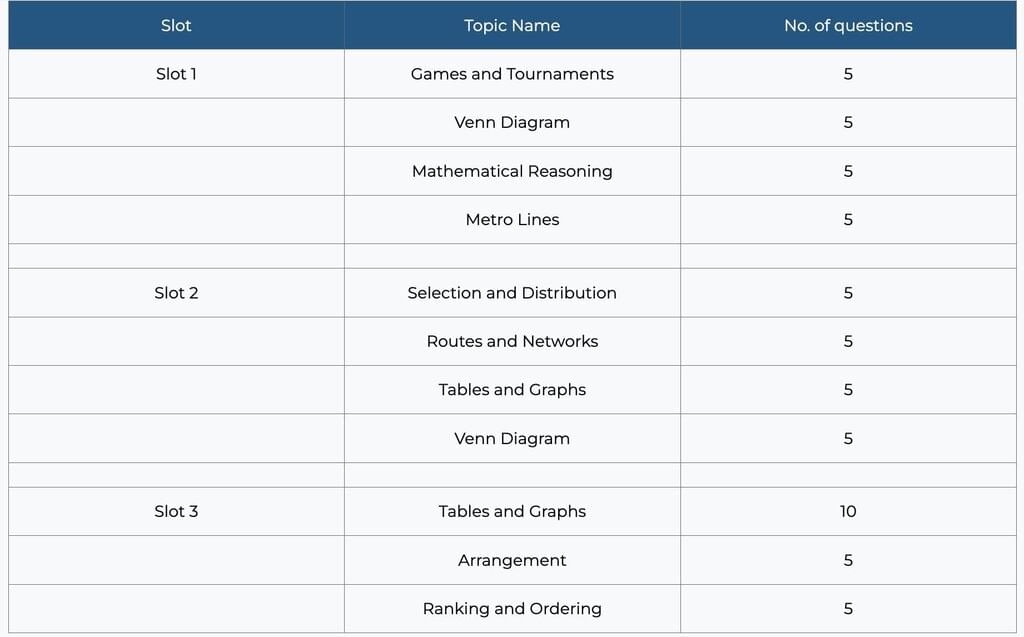
Topics in CAT LRDI
Our experts have curated a comprehensive LRDI course with video lectures, detailed notes, and topic-wise practice tests. Key topics include:
- Data Interpretation
- Tables (Tables)
- Bar Graphs (Bar Graphs)
- Pie Charts (Pie Charts)
- Line Graphs (Line Graphs)
- Logical Reasoning
- Seating Arrangements (Seating Arrangements)
- Puzzles (Puzzles)
- Blood Relations (Blood Relations)
- Direction Sense (Direction Sense)
- Advanced Topics
- Caselets (Caselets)
- Venn Diagrams (Venn Diagrams)
- Networks and Flowcharts (Networks)
- Games and Tournaments (Games)
While these topics form the core of the LRDI section, aspirants should also build a strong foundation in related analytical skills to tackle unconventional question types.
Topic-wise Weightage CAT 2025
| Topic | Weightage |
|---|---|
| Data Interpretation (Tables, Charts, Graphs) | 30% |
| Seating Arrangements | 20% |
| Puzzles | 15% |
| Caselets | 15% |
| Venn Diagrams | 10% |
| Networks and Flowcharts | 5% |
| Games and Tournaments | 5% |
Note: Weightages are approximate, based on trends from 2022-2024 CAT exams. Actual distribution may vary.
Tips to Ace Questions in LRDI for CAT Section
1. Build Analytical Thinking
The LRDI section tests your ability to interpret data and solve logical puzzles. Start by strengthening your analytical skills through regular practice.
- Watch video lectures on key LRDI concepts in our course.
- Solve 5-10 practice sets per topic to build familiarity with different question types.
EduRev Tip: Start with easier sets to build confidence, then progress to complex ones to mimic CAT-level difficulty.
2. Practice Set-Based Questions
LRDI questions come in sets, requiring you to solve multiple questions based on a single dataset or scenario. Practising set-based questions improves your ability to extract relevant information quickly.
- Priya Menon, IIM Calcutta
- Attempt level-wise tests (Level-wise Tests) to simulate CAT difficulty.
- Focus on medium and hard-level sets to prepare for the toughest questions.
3. Master Time Management
With only 40 minutes for the LRDI section, time management is critical. Practice allocating time per set (8-10 minutes) and stick to it.
- Use our mock tests (CAT Mock Tests) to practice under timed conditions.
- Learn to skip overly complex sets to maximise attempts within the time limit.
4. Analyse and Revise
Revision and analysis are key to improving accuracy. After each practice set, analyse your mistakes to identify weak areas.
- Use our course’s 150+ topic-wise tests for structured revision.
- Review past year papers to understand question trends.
EduRev Tip: Maintain a formula and strategy sheet for quick reference during revision.
5. Practice Mock Tests and Past Year Papers
Mock tests replicate the CAT exam environment, helping you build stamina and pattern recognition. Past year papers provide insights into question types and difficulty levels.
- Attempt our CAT Mock Test Series (Mock Tests).
- Explore mock test series for other exams like SNAP (SNAP), XAT (XAT), and NMAT (NMAT) to broaden your preparation.
Recognising patterns in 50-60% of LRDI questions during the exam can significantly boost your confidence and score. Structured mock practice is the key to achieving this.
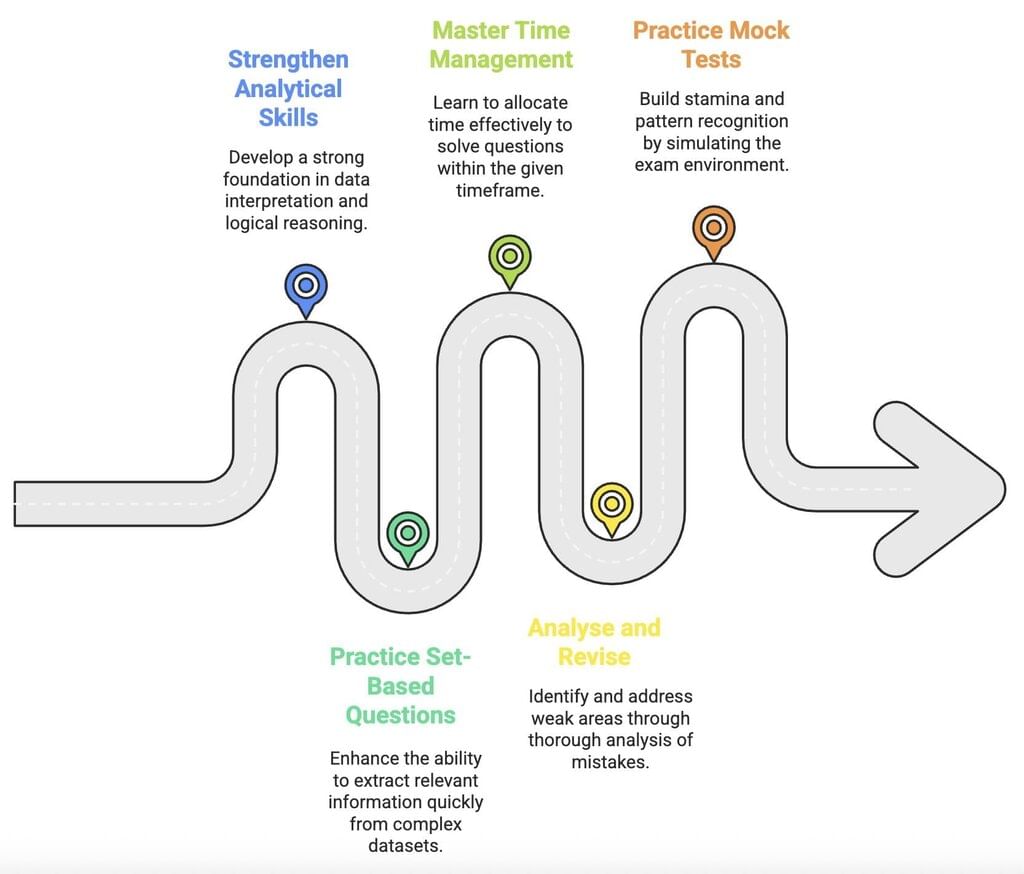
Frequently Asked Questions
- What is the significance of LRDI in CAT?
LRDI assesses your analytical and decision-making skills, crucial for management studies. It contributes significantly to your overall CAT score. - What are the topics covered in the CAT LRDI section?
Key topics include Data Interpretation (Tables, Charts, Graphs), Seating Arrangements, Puzzles, Caselets, Venn Diagrams, Networks, and Games. - How has the trend of the CAT LRDI section been in the last 3 years?
The section has seen 4-5 sets per slot, with a mix of moderate to high-difficulty questions, focusing on data-heavy and logical reasoning sets. - What is the weightage of different topics in the CAT LRDI section?
Data Interpretation (~30%), Seating Arrangements (~20%), Puzzles (~15%), Caselets (~15%), Venn Diagrams (~10%), and others (~10%). - What are some tips to excel in the CAT LRDI section?
Build analytical skills, practice set-based questions, manage time effectively, revise regularly, and attempt mock tests.
For more resources, visit our LRDI Course or explore our LRDI FAQs.
|
25 videos|31 docs|70 tests
|
FAQs on Advice to Aspirants - CAT: Logical Reasoning and Data Interpretation - CAT Mock Test Series 2025
| 1. What are the key strategies for preparing for the LRDI section of the CAT exam? |  |
| 2. How can I improve my speed and accuracy in solving LRDI questions? |  |
| 3. What types of questions can I expect in the LRDI section of the CAT exam? |  |
| 4. Are there any specific resources or books recommended for LRDI preparation for CAT? |  |
| 5. What additional tips can help in preparing for the LRDI section of the CAT exam? |  |




















